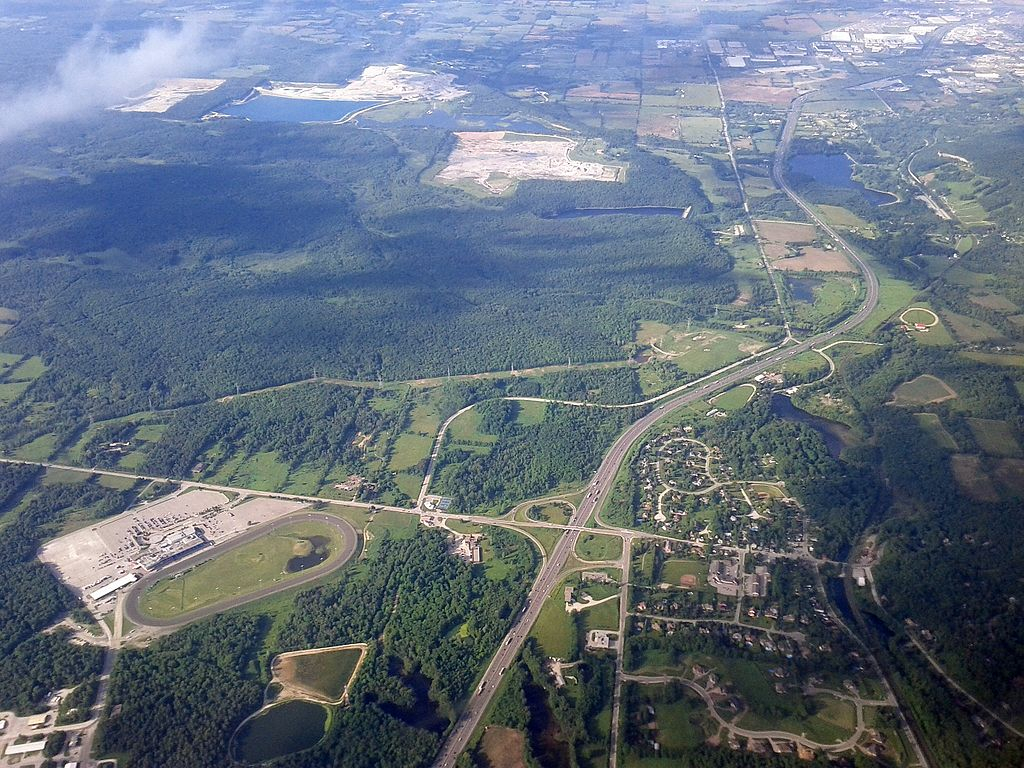Ottawa has taken charge of the environmental assessment for the Ford government’s contentious Highway 413 project, but will leave a second controversial highway plan in Ontario’s hands.
The 413 — which has come under increased scrutiny over its environmental impact in recent months — will now be subject to a longer and more rigorous review. Many believe this effectively spells the end of the project. The planned highway, the subject of a National Observer/Torstar investigation published last month, would run through the protected Greenbelt.
"Canadians expect their governments to make decisions based on science and evidence that support environmental protection and economic growth," said federal Environment Minister Jonathan Wilkinson in a statement explaining the decision Monday.
"The Impact Assessment Agency of Canada and other federal departments have identified clear areas of federal concern related to this project. My decision is based on their finding that this project may cause adverse direct or incidental effects on federally listed species at risk, and the uncertainty that officials have brought to my attention around whether those effects can be mitigated through project design or existing mechanisms."
Wilkinson chose not to intervene on the Bradford Bypass, another proposed highway that would run through the Greenbelt.
The office of Ontario Transportation Minister Caroline Mulroney did not answer when asked whether the province plans to push ahead with the 413, which is also known as the GTA West Corridor. But in a statement, Mulroney said the province will work with the federal government to address its "newly found concerns."
"At this point, it is unclear what the scope of a federal impact assessment would be, or whether a full impact assessment would be warranted," Mulroney said.
"The GTA West project is already subject to a robust provincial Individual Environmental Assessment (EA), which is among the most stringent assessment processes on record. This project is intended to address congestion and forecasted population growth for the people of Ontario."
Opposition critics praised Wilkinson's decision to give the 413 a federal assessment.
Ontario NDP environment critic Sandy Shaw said the federal assessment of the 413 is a move in the right direction, but "we can’t start popping the champagne."
“Nobody can take their eye off Doug Ford when it comes to carving up the Greenbelt," she said.
Ontario Liberal Leader Steven Del Duca thanked the Wilkinson and Prime Minister Justin Trudeau for stepping in.
"I’m pleased to see the federal government step up and provide real leadership on protecting Ontario’s natural environment," Del Duca said in a statement.
Ontario Green Party Leader Mike Schreiner welcomed the news in a statement but said "significant time and money could be saved if the Ontario government were to cancel both projects.
"Both these highways would pave over environmentally significant and sensitive areas and farmland, and put local ecosystems at risk," Schreiner said. "All while increasing sprawl and ramping up GHG emissions."
Wilkinson's decisions come after coalition of environmental groups wrote to the federal environment minister in February to ask that Ottawa step in on both the 413 and the Bradford Bypass, citing impacts on the environment from the construction and the increased emissions from traffic on the highways. The Mississaugas of the Credit First Nation sent a similar request a month later, the Impact Assessment Agency said Monday.
Ecojustice, one of the groups that wrote to Wilkinson, hailed the decision as a positive step.
"We are confident that this added scrutiny will ultimately reveal that the project is not in the public interest," said Ecojustice staff lawyer Laura Bowman, referring to the 413.
However, Bowman said Ecojustice and the other groups behind the requests will continue to campaign against the Bradford Bypass.
"The provincial process lacks credibility due to the gutting of environmental assessment laws and policies in recent years," she said.
Highway 413 could harm three key endangered species, Ottawa finds
The National Observer/Torstar investigation into the 413 found that eight of Ontario’s most powerful land developers own thousands of acres of prime real estate along the highway's planned route. The investigation also examined ties between the developers and Doug Ford’s Progressive Conservatives.
If built, the 413 would run a 60-kilometre route connecting Highway 401 near Milton to Highway 400 north of Vaughan. Its proposed path would cut through 2,000 acres of farmland, cross 85 waterways, pave nearly 400 acres of protected Greenbelt land, disrupt 220 wetlands and carve through the habitats of 10 species at risk.
In an analysis that helped guide Wilkinson's decision, the Impact Assessment Agency specifically pointed to three endangered species: the western chorus frog, the red-headed woodpecker and a type of dragonfly called a rapids clubtail.
The red-headed woodpecker and the rapids clubtail are protected under provincial legislation, which the Ford government has weakened in recent years. But the western chorus frog is only covered by rules that apply to federal lands — because the 413 would be build on provincial land, frog habitat along the route wouldn't be safeguarded.
A previous study found the 413, which could cost between $6 billion and $10 billion, would save drivers less than a minute on average. But the Progressive Conservatives, who revived the project after it was shelved by the previous Liberal government, have argued it could shave half an hour off the length of the route.
In recent months, all municipalities along the route have either turned their backs on the project or backed the environmental groups' request for Ottawa to step in.
Over 1,600 people and groups wrote to the Impact Assessment Agency to weigh in on the 413, including the Huron-Wendat Nation, Curve Lake First Nation, Hiawatha First Nation, Mississaugas of the Credit First Nation and Six Nations of the Grand River. About 90 per cent of the feedback was negative, the agency said.
"Minister Wilkinson has listened to the concerns of local citizens along the proposed path of Highway 413, and the unanimous voice of local governments who supported this request for a federal environmental assessment," said Sarah Buchanan, Ontario climate program manager at Environmental Defence, one of the groups that asked Ottawa to step in.
The Ontario government has said the project is necessary to accommodate all the drivers expected to be on Greater Toronto Area roads in the coming decades, and had sought to streamline the project's environmental assessment process. All opposition parties in the legislature have said they would cancel it if elected.

'Climate leaders don't build highways'
The Bradford Bypass is a shorter 16-kilometre route that would cross York and Simcoe counties north of Toronto to connect Highway 400 with Highway 404. The bypass — also known as the Holland Marsh Highway — would also run through the Greenbelt, crossing a sensitive area of wetlands and fertile soil called the Holland Marsh. It would also go over the Holland River, which drains into Lake Simcoe.
The bypass last received an environmental assessment in 1997, before Ontario protected the Greenbelt. That review predicted the highway could cause severe water pollution and did not examine the climate impacts of the project.
The Ford government has proposed to exempt the project from the provincial environmental assessment process, and has said it's working to minimize the planned highway's impact on the environment.
About 1,500 people and groups wrote to the Impact Assessment Agency with concerns about the bypass. Ottawa also received feedback from the Huron-Wendat Nation, Curve Lake First Nation and Hiawatha First Nation, the agency said.
In a statement Tuesday, Wilkinson said the layers of provincial and federal approvals the bypass must currently receive to go ahead would be enough to address any potential issues.
Margaret Prophet, the executive director of the Simcoe County Greenbelt Coalition, a non-profit campaigning against the bypass, said the federal government is "abdicating its responsibility" by not stepping in on the project.
"It is hard to believe that a government that is trying to portray itself as a climate leader has decided that a highway which threatens Lake Simcoe, increases GHGs, cuts through sensitive parts of the Greenbelt and contaminates groundwater need not be scrutinized," she said. "This is a political decision... Climate leaders don't build highways."
Updates and corrections
| Corrections policyThis story was updated to include reaction from Ontario opposition parties.
This story was updated to add a statement from Ontario Transportation Minister Caroline Mulroney, a statement from Ontario NDP environment critic Sandy Shaw, reaction from Environmental Defence and details from the Impact Assessment Agency's analysis.






Comments